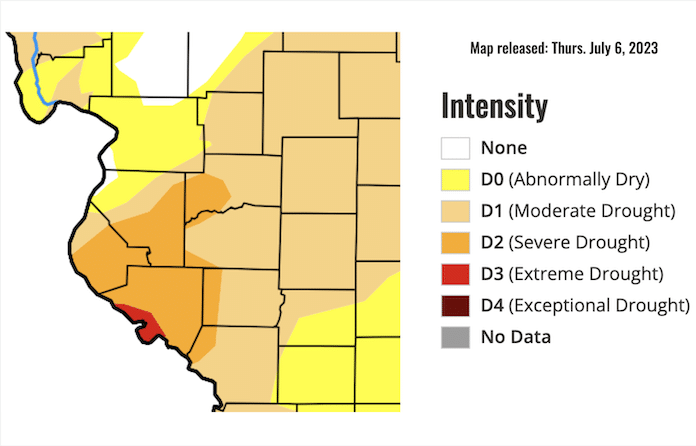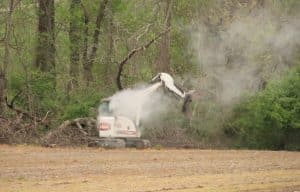Drought limits corn height across state

By DANIEL GRANT
FarmWeek
If you can still easily look across entire cornfields because the plants are so short, you’re not alone.
The height of corn has been greatly limited in many areas of Illinois by the severe lack of moisture so far this season.
The majority of the state (92.7 percent) was in drought, according to the latest U.S. Drought Monitor released June 29, while the remainder, mostly in southern Illinois, was rated abnormally dry.
This includes a pocket of extreme drought in western Adams, Hancock and Pike counties along the Mississippi River and the very western edge of Schuyler County. Meanwhile, most of the northern two-thirds of the state was in severe drought as of June 27. The latest Drought Monitor was released just hours before a widespread derecho pummeled a large portion of the state June 29 and provided some relief.
Other storms hit portions of the metro east June 30 and July 1.
“We’ve been drier since planting than 1988 or 2012,” Lance Tarochione, DeKalb/Asgrow technical agronomist, told FarmWeek hours before the storm. “Things don’t look good.
“If you have early-planted corn on good soil, it’s held up the best,” he noted. “But, if you have later-planted corn, corn on lighter soils or compacted soils, that stuff looks pretty tough. There’s lots of scary-short corn and lots of nutrient deficiency symptoms.”
But while much of this year’s corn crop might not grow to the height of a professional basketball player, many farmers can still score some respectable yields if the recent return of regular showers continues.
And the recent storms, despite wind and hail damage, was a good start in many areas.
“There’s a lot of concern about height. There’s going to be a lot of corn six feet tall fully tasseled,” Tarochione said. “And it’s not going to grow much after it tassels.
“But there’s really no correlation between height and yield, although there is some correlation with leaf area and yield (which can affect sunlight capture and photosynthesis),” the agronomist noted.
Just 26 percent of the corn crop and 25 percent of soybeans were rated good to excellent statewide as of June 26, down dramatically from 70 percent and 66 percent, respectively, as of the same date last year.
The key, of course, is the weather pattern for the upcoming pollination season.
“The height of corn is determined in June, but the corn yield is determined in July,” Tarochione said. “This crop still has far more potential than crop insurance levels, but we need a lot of rain soon. If there’s not much rain soon, then it won’t pollinate well and there could be a lot of kernel abortion.”
Soybean growth also remains limited, although that crop has more time to recover this season as yield potential isn’t usually set until August, the agronomist noted.
Rainfall activity increased in the state during the last week of June.
“The forecast is at least more optimistic,” Tarochione said.
Moisture deficits reached 8-10 inches in much of the state through late June, according to Trent Ford, state climatologist with the Illinois State Water Survey. Statewide, topsoil ranked 89 percent short to very short as of June 26.
This story was distributed through a cooperative project between Illinois Farm Bureau and Illinois Press Association. For more food and farming news, visit FarmWeekNow.com.






